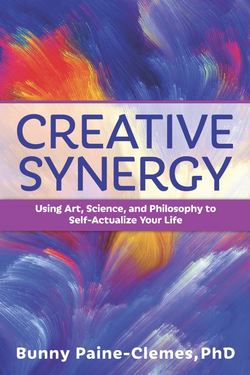Читать книгу Creative Synergy - Bunny Paine-Clemes - Страница 44
На сайте Литреса книга снята с продажи.
A History Lesson:The Paradigm Shift
ОглавлениеThomas Kuhn explains that in “normal science” paradigms guide research by establishing implicit rules that govern goals and procedures. Occasionally, however, some “new and unsuspected phenomena” appear. Then debate begins.79 Resistance can be fierce until “an anomaly comes to seem more than just another puzzle of normal science.” Then “More and more attention is devoted to it by more and more of the field’s most eminent men,” and the attacks become inconsistent or irrelevant. “When the transition is complete, the profession will have changed its view of the field, its methods, and its goals.”80
Basil Willey explains how such shifts occur:
A general demand for restatement or explanation seems to have arisen from time to time . . . Such a demand presumably indicates a disharmony between traditional explanations and current needs. It does not necessarily imply the “falsehood” of the earlier statement; it may simply mean that men now wish to live and act according to a different formula . . . The newer explanation may be said, not so much to contain “more” truth than the older, as to supply the kind of truth now demanded.81
Such a “demand for restatement” occurred in the scientific revolution of the seventeenth century. Amid the upheaval caused by scientists such as Galileo and inventions such as the telescope, philosopher René Descartes tried to make sense of how the new truths offered by science could coexist with the old truths of religion. He became famous for his solution: “I think; therefore I am.” In other words, “I may not be able to prove my consciousness in the same way that a telescope can verify objects in the heavens, but I know that it exists because I know that I think.” With this maxim, Descartes split mind and matter, declaring them fundamentally different and not accessible by the same means of knowing. Though his intent was to protect religion from science, this “Cartesian split” had the opposite effect. It ended by promoting logical positivism: the extreme view that only matter accessible through the senses is a valid reality. The universe, stripped of its mystery and wonder, became a great machine, powered by the laws of Newton.
By the end of the nineteenth century came the paradigm that Alvin Toffler calls “indust-reality” or the Second Wave: a zeitgeist dominated by the factory model with its belief in standardization, specialization, synchronization, concentration, maximization, and centralization.82 This paradigm includes the belief in the scientific method as the only valid approach to knowledge, the view of the universe as a mechanical system composed of elementary building blocks, the view of life in society as a competitive struggle for existence, and the belief in unlimited material progress to be achieved through economic and technological growth.83
Many thinkers believe that we are now undergoing a shift away from this paradigm. The new definition is holistic rather than fragmented, systemic rather than atomistic. As long ago as 1981, Toffler predicted that “a new age of synthesis” was being born:
In all intellectual fields, from the hard sciences to sociology, psychology, and economics . . . we are likely to see a return to large-scale thinking, to general theory, to the putting of pieces back together again. For it is beginning to dawn on us that our obsessive emphasis on finer measurement of smaller and smaller problems, leaves us knowing more and more about less and less.84
Christopher Alexander also notes “wholeness” as “one of the main themes of contemporary thought.”85 Richard Ogle, who believes that creative thinking occurs in the “idea-spaces” between various fields, ponders, in language synonymous to “the Unified Field,”
Suppose genius (or whatever term we want to use for the mental capacities underlying creative leaps) turned out to be a very high level of navigational skill in surfing the networked idea-spaces of the extended mind and locating powerful forms of embedded intelligence.86
Parker Palmer claims this holistic model also includes cooperation: “This transformation of images of reality—from fragmentation and competition to community and collaboration—has gone on in virtually every academic discipline over the past fifty years.”87
